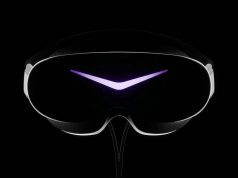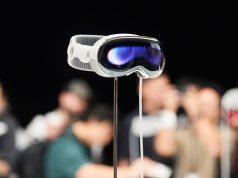Moving around comfortably and immersively in VR remains a hurdle for VR game developers. VR studio Huge Robot has created the Freedom Locomotion System which brings together a number of VR movement systems into a comprehensive and functional package which allows for comfortable walking, running, and climbing in VR.
Since video games have existed, traversing great distances in large virtual worlds has been part of game design. In games like Halo, players run, drive, and fly across hundreds of virtual miles. But in VR, while driving and flying is usually pretty comfortable, running and walking often isn’t. So many developers have had to experiment and implement novel locomotion techniques for games which require traversal beyond the player’s available physical space.
 There’s a bunch of different techniques out there. Many of them are completely comfortable, but not necessarily immersive. The common method of ‘blinking’ from one place to the next makes it hard to maintain a firm mental map of the space around you.
There’s a bunch of different techniques out there. Many of them are completely comfortable, but not necessarily immersive. The common method of ‘blinking’ from one place to the next makes it hard to maintain a firm mental map of the space around you.
In an effort to tackle the challenge of comfortable and immersive VR locomotion, studio Huge Robot has created the Freedom Locomotion System, a comprehensive locomotion package that Director George Kong boldly believes is “as close to solving the issue of immersive VR locomotion as we can get within the current practical limitations of VR.”
 The system is underscored by what Kong calls CAOTS (Controller Assisted On the Spot) movement. It’s a sort of ‘run-in-place’ movement system of Huge Robot’s own design. Kong says it lets players comfortably and immersively move while leaving their hands free for interactions with the virtual world (especially important for games where you might regularly wield a weapon like a gun or sword).
The system is underscored by what Kong calls CAOTS (Controller Assisted On the Spot) movement. It’s a sort of ‘run-in-place’ movement system of Huge Robot’s own design. Kong says it lets players comfortably and immersively move while leaving their hands free for interactions with the virtual world (especially important for games where you might regularly wield a weapon like a gun or sword).
In addition to CAOTS, the Freedom Locomotion System, also includes a number of subsystems which offer different modes of locomotion and methods of smart interactions between the player’s movement and the virtual world.
For instance, with the Freedom Locomotion System, players will move up or down in elevation along slopes and stairs if they walk along them in their physical space (instead of clipping through the geometry). There’s also a climbing system which detects ‘grabable’ geometry, providing a procedural way for making models climbable for players. There’s also a smart method for dealing with players clipping into walls and over edges. Kong offers a detailed breakdown of the package and its capabilities:
When combined with the CAOTS system, the VR movement provided by the Freedom Locomotion System looks intuitive and immersive. It isn’t clear yet if or how Huge Robot plans to distribute this system as a foundation for VR developers, but Kong says an extensive VR demo will be available soon on Steam and we’re excited to give it a try.









